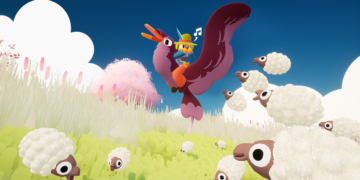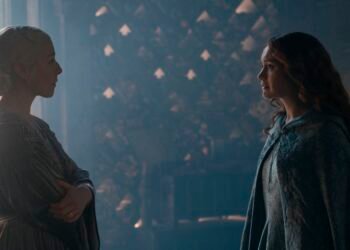Anybody who’s watched or read The Walking Dead knows the familiar beats of a long-running story set in an ongoing apocalypse: the protagonists find safety, lose it to catastrophe, then struggle to find new safety, only to lose that again as well. The cycle can go on endlessly, as long as the audience is willing to tune in, but over time, it can become maddeningly repetitive. Still, there aren’t many other options. There isn’t much drama in survivors sitting hunkered down in a secure place for long periods, unless they bring that drama into their cloisters with them.
Author Josh Malerman clearly understands this dynamic, but it’s still startling both how often he puts it into effect in Malorie, the sequel to his 2014 horror novel Bird Box. When Susanne Bier’s film adaptation, starring Sandra Bullock, came out on Netflix and rapidly became one of the service’s all-time top 10 most-watched movies, a sequel seemed inevitable. Malorie continues the Bird Box story, but skips past any sense of setup to lunge into that moment where the protagonists’ world collapses and they’re dumped back into urgent, severe danger. The rush to action is only the first of many aspects of Malorie that makes it feel as much like a screenplay for a Bird Box movie sequel as a novel in its own right.

Image: Del Rey Books
Bird Box lays out a normal world turned abnormal in an instant. From somewhere, “creatures” arrive, and everyone who looks at them goes insane. The afflicted murder everyone around them, or self-destruct in horrific ways. No one can say what the creatures are or find a way to fight them, since even a brief glance at them destroys the viewer’s mind. Bird Box isn’t about coming to terms with the creatures or finding their weaknesses and learning to fight back, like the very similar horror movie A Quiet Place. It’s about the subjective, haunting experience of navigating a world where sight is a death sentence. Malorie (the Sandra Bullock character), initially an ordinary enough woman, becomes a coldly functional protector to two children, who she refuses to give names. Together, they go on a terrifying journey in pursuit of a safe haven, which they eventually find.
Malorie’s opening sentences feature that haven unraveling in an abrupt burst of violence, and Malorie grabbing the children and escaping, leaving their new home behind. Shaped by trauma and betrayal, Malorie has become hardened against other people’s pain, and the only things that matter to her anymore are surviving and protecting her kids, now named Olympia and Tom. As their safe haven collapses, she abandons any other potential survivors in order to get the children out, and whisk them all off to yet another temporary shelter.
Ten years later, Tom and Olympia are teenagers, chafing under Malorie’s rigorous rules and endless negativity. As a 16-year-old, Tom in particular is obsessed with devising experiments that might let him see or fight a creature. Olympia is both more obedient and more removed, going along passively with Malorie’s extensive safety protocols where Tom bucks them at every step. Malorie is exhausting to be around, and on some level she knows it, but excuses it because her stringency has kept them all alive. But the children are inevitably reaching a point of rebellion. That shifting dynamic alone would provide plenty of drama, but before long, a stranger shows up with news that changes their world again, and provokes Malorie to abandon her family’s latest shelter, while trying to tighten her grasp on her wriggling, resisting son even more.
Bird Box was a moody, lyrical book as well as a creepy one, which sometimes worked against it: Malerman built his tension effectively in that book, and layered in some beautiful and haunting descriptions. But his tendency to jump back and forth between styles could be distracting, and he notably didn’t put the same care into differentiating his characters that he put into illustrating his aural landscapes. Malorie doesn’t have the same tonal conflict — it’s virtually all fast-moving, stripped-down story. It spends most of its time in Malorie’s head, or Tom’s, but the literary conceits have been replaced with a kind of grim monotony, as Malorie endlessly shouts orders at her children, and endlessly circles around the new information she’s gotten, and the compulsions it’s creating. It’s a harrowing and truthful portrait of PTSD and obsession, but it’s so repetitive that it doesn’t always make for satisfying or compelling reading.
It’s certainly thrilling, though. Malorie throws the characters from one unsettling situation into another, and ratchets up the tension with Malorie’s well-drawn paranoia. When the group winds up in a situation where everyone around them feels safe and relaxed, and Malorie responds like a cornered animal, it becomes easy to see her as representing more of a threat to her kids than the creatures they’ve learned to live with. Tom’s right in feeling that she’s holding them back from growth and from experiencing the world, but more than that, she’s come to a point where she seems to be feeding on her own fear. A lot of the book lives in the queasy space of wondering which is going to boil over first, the pressure Malorie’s creating on herself, or the pressure she’s putting on her children.

Bird Box fans will inevitably be divided over the tack Malerman takes here with his central mysteries: what the creatures are, why they drive people mad, and whether they have consciousness or intent, malignant or otherwise. Malorie lays out some interesting theories and offers the series a huge potential step forward, the kind that could be seen either as a resolution, or as an opening to further sequels. But it never punctures the original book’s sense of a vast and intimidating unknown behind humanity’s destruction. That choice won’t satisfy everyone, but in an environment where horror sequels so often kill every hint of tantalizing ambiguity and fear in a series, it’s both a wise play and an eerie, unusual one.
Instead, Malorie focuses on Malorie’s mental state, Tom’s response to it, and how both of them take their obsessions out into a larger world. The story moves rapidly from one safe haven to another, disrupting each of them in different ways, and keeping its central family on the move. Like so many other things about Malorie, it’s a tactic that seems designed for the screen — the story doesn’t get much downtime as it shifts from one setting to another, and even with the strong focus on internal debates and personal frustrations, the constant sense of external motion will inevitably be screen-friendly. Malorie will likely make a thrilling, engaging movie.
But as a novel, it sometimes seems far too curt. The late arrival of a familiar threatening force comes out of nowhere, is never explained, and is casually dismissed in the finale in a bafflingly impersonal and distanced way that never seems real. Descriptive opportunities that the Malerman of 2014 would have reveled in blow by in a few brief sentences. The book’s wrap-up feels rushed and rapid, leaving both the latest opportunity for safety and a major discovery for Malorie feeling unexplored and unrealized. There’s a lot missing from this book’s headlong action that would make it a more rich and satisfying standalone experience. But it should all look great on home screens a few years from now.
















































